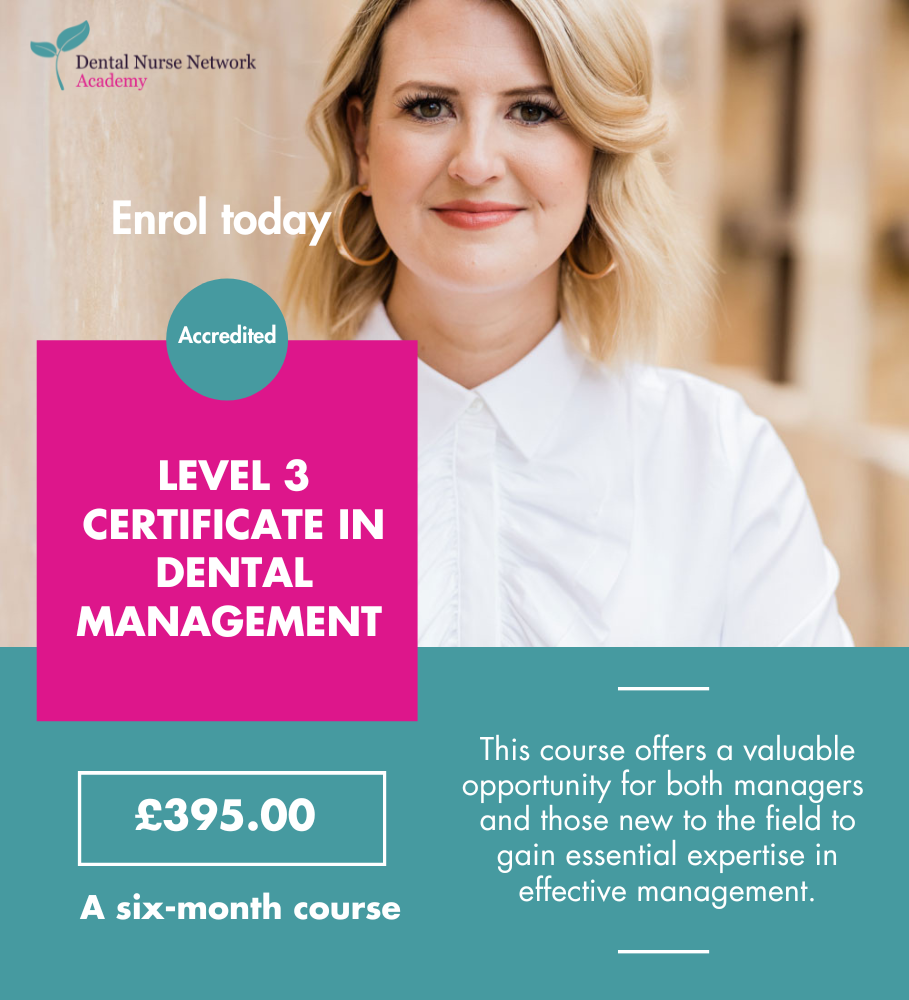 Despite them being preventable, caries and periodontal disease are the two biggest concerns when it comes to the oral health of patients. It is therefore important to have a thorough understanding of both. Gum disease alone is thought to affect three out of four adults over the age of thirty five in the UK and is the biggest cause of tooth loss (Gum Disease Information Bureau, 2010).
Despite them being preventable, caries and periodontal disease are the two biggest concerns when it comes to the oral health of patients. It is therefore important to have a thorough understanding of both. Gum disease alone is thought to affect three out of four adults over the age of thirty five in the UK and is the biggest cause of tooth loss (Gum Disease Information Bureau, 2010).
This article discusses the different stages of periodontal disease, including the main factors that cause it and contribute to it. It aims to enable you to give more tailored oral hygiene instructions to patients. Each and every member of the dental team should be confident in giving oral hygiene instructions, as dentistry is focusing on prevention – now more than ever. Prevention is, of course, better than cure.
Healthy Gums
In order to begin talking about the disease process it is important to be aware of what the gums are like when healthy. This will enable you to recognise any abnormalities that patients may present with. In appearance, the gingiva are usually pale pink and firm, and may occasionally have a stippled surface similar to orange peel. The colour may vary depending on a patient’s ethnicity and skin colour; it is not unusual for the gums to have a dark pigmentation in individuals with dark skin tones. Around the gingival margin there is a small portion of the gum that is not firmly attached to the tooth. This is known as the free gingiva or gingival cuff, and is around 1-3mm in depth during health when probed gently.
Plaque is a sticky white substance filled with bacteria that builds up on the surface of the teeth, in between the teeth, and at the gingival margins. The longer this plaque is left without being removed, the more damage it can cause to the oral cavity. The bacteria eventually begin to form into very clever colonies know as a biofilm with a protective layer on the outside which makes it more difficult to remove. Gingivitis can occur as a consequence of plaque build-up.
Plaque-Induced Gingivitis
Gingivitis is a common condition that many people experience at some point during their lives. Put simply, it is inflammation of the gums. It is often caused by poor plaque removal. The bacteria within plaque initiates the bodies’ inflammatory response, causing the gums to become inflamed and swollen and lose their healthy contour. Gingivitis also causes redness, bleeding, bad breath and (in some cases) pain. Probing depths may also be increased due to the gums swelling and becoming larger in size. This is known as false pocketing as the gum is still attached to the tooth at the cervical portion. Fortunately, gingivitis is reversible if treated early on, and does not cause permanent damage to the surrounding bone or tissues that hold the teeth in place. Treatment for gingivitis is mainly good oral hygiene instructions and motivation to improve the patient’s home care routine. The patient may also require a scaling from the dentist or hygienist and removal of any sites that could be attracting more plaque, such as fillings with large overhangs.
Non-Plaque-Induced Gingivitis
It is important to be aware that not all cases of gingivitis are caused by poor oral hygiene. Hormones can play a big role, and therefore patients of either sex who are experiencing puberty, and female patients who are pregnant, experiencing the menopause, or taking the oral contraceptive pill may notice that they suffer with gingivitis despite having good oral hygiene. It is still important to give these patients oral hygiene instructions, as although they may appear to have quite good oral hygiene, the hormones in their bodies are causing them to have an overreaction to the plaque in their mouths, making good plaque removal essential.
Gingival overgrowth is an abnormal enlargement of the gingiva which can also lead to gingivitis. Gingival overgrowth can be a side effect of some medications which makes it very difficult for patients to maintain good plaque control. Phenytoin for the treatment of epilepsy and Cyclosporine for high blood pressure are the two main examples.
Periodontitis
If gingivitis is left untreated, it can progress into periodontitis in some individuals. This is caused by both the bacteria present in plaque and the way an individual’s body responds to it. Unlike gingivitis, periodontitis causes irreversible damage to the bone and supporting structures of the teeth and can eventually lead to tooth loss. Periodontitis causes pockets to form around the teeth resulting in a deeper probing depth than the healthy 1-3mm mentioned earlier. This is known as a true pocket because the fibres attaching the gum to the teeth are destroyed. Periodontitis does not often progress in an orderly fashion; instead, it goes through bursts of activity (where lots of destruction occurs in the bone and supporting tissues at once) and periods of inactivity (where everything goes quiet for a while).
Once a patient has pocketing around the gums, the bacteria see this as a perfect reservoir to migrate to and reproduce, causing the destruction to continue. It is incredibly difficult for a patient to clean more than a couple of millimetres below the gum line at home, making sub-gingival cleaning at a dental surgery very important. In molar teeth, bone loss and recession can progress far enough that the roots of the teeth are exposed. This is known as furcation involvement and also acts as a reservoir for bacteria as it is an incredibly difficult area to assess and clean.
Some patients may be unaware that they have gum disease as the appearance of periodontitis alone is difficult to pick up on. Often the gums can look healthy but have deep probing depths, recession, bleeding on probing, sub- and supra-gingival calculus and bone loss beneath the gums. Periodontitis can be treated with regular deep scaling and monitoring as well as good oral hygiene and motivation. However, the patient’s bone will not grow back, and neither will the deep pockets completely resolve back to normal – particularly for those in the advanced stages of disease.
Host Response
Not everyone with gingivitis develops periodontitis. In fact, evidence shows that in developed countries only 10-15% of the population are susceptible to chronic periodontitis (British Society of Periodontology, 2012). This depends on the way an individual’s body responds to the bacteria and is known as the host response. In response to the high number of bacteria inside the mouth during gingivitis, some individuals’ own immune systems will attack the area with full force. This causes a huge amount of destruction to the bacteria but also to the healthy tissue in the gums, as the immune system has no idea what is good and what is bad. It is the individuals whose immune systems respond like this who develop periodontitis. So it is the body’s own immune response that causes most of the damage!
Treatments
Early diagnosis of periodontal disease will ultimately give the patient a much better chance of treating the disease and preventing its progression. Therefore regular dental check-ups are a must. You may have seen patients being treated in general practice for periodontal disease by the dentist or hygienist. This is known as non-surgical periodontal therapy and involves detailed measurements including pocket depths around six points of the tooth, recording of areas of bleeding, measuring recession, furcation involvement, plaque scores and mobility. Root surface debridement (RSD) is also carried out. The objective of RSD is to remove as much plaque and calculus from above and below the gum line as possible without damaging the cementum of the tooth. This can take several visits and requires excellent compliance from the patient at home to be successful.
In advanced stages of disease or if RSD fails more than once, the patient has the option to be referred for surgical periodontal therapy carried out by a specialist periodontist.
Contributing Factors to Periodontal Disease
Factors such as smoking and alcohol consumption are known to contribute to the severity of gum disease and also inhibit healing after treatment. This is why it is so important to encourage patients to give up these habits for the benefit of their oral and general health. Smoking can also restrict blood flow to the gums, meaning that patients often don’t experience bleeding gums during gingivitis as much as non-smokers do. This can make the disease process progress to a more severe stage without the patient experiencing any symptoms.
Stress can also have a major effect on the way the body responds to infection and inflammation. As healthcare professionals, we should be treating each patient as a whole person rather than just focusing on what is going on in their mouth. Lifestyle advice can be given to patients with stressful lifestyles, and in turn this will benefit their general and oral health.
Genetics can contribute to periodontal disease by making some people more susceptible than others based on their genetic make-up. If periodontal disease runs in someone’s family then that individual could be more susceptible to getting it themselves. For such patients, preventative advice is incredibly important.
Systemic illnesses that affect the immune system could worsen periodontal disease as it can interfere with the body’s natural inflammatory response.
Obesity and a poor diet make people unhealthy in many ways, including reducing the ability to fight off infection. Periodontal disease begins as an infection in the gingiva, and those with a poor diet struggle to fight it off, along with many other infections.
Oral Hygiene Instructions
So what can you tell patients to do at home to help prevent or manage periodontal disease?
- Brushing at least twice daily. Night time is the most important, followed by any other time of day. Patients should ensure they are brushing along the gingival margin as well as the teeth, and should try to concentrate on a few teeth at a time, including all of the surfaces. Often it is best to get the patient to show you how they are brushing so you can modify it if necessary.
- Interdental cleaning at least once daily. This is essential for effective plaque removal. Floss, interdental brushes, Waterpiks and single-tufted brushes are all good aids to recommend to patients.
- Eliminating bad habits such as smoking and alcohol consumption above the recommended weekly units.
- Living a healthy lifestyle. This includes eating a good diet and reducing stress levels where possible.
- Using mouthwash? This can be recommended to patients as some mouthwashes can reduce the levels of bacteria in the mouth. However, this should be used as an adjunct only and not a replacement for mechanical plaque removal. Mouthwash cannot penetrate a biofilm like the action of a toothbrush can.
Periodontal Disease and Systemic Health
Periodontal disease is starting to be taken much more seriously due to the links found between chronic gum problems and other serious health problems such as heart disease, stroke, diabetes and low-birth-weight babies. Evidence has found other systemic conditions such as respiratory problems, chronic kidney disease, rheumatoid arthritis and cancer can also be linked to periodontal disease. Whilst further studies are still needed in this area it is good to make patients aware that maintaining their periodontal health may actually help to lower their risk of other systemic diseases.
Author: M Promphrett RDH
References
British Society of Periodontology (2012) Young Practitioners Guide to Periodontology. Selby: British Society of Periodontology.
Gum Disease Information Bureau (2010) Online at: http://www.gumdiseaseinfo.co.uk/ [Accessed on: 15/11/15].


